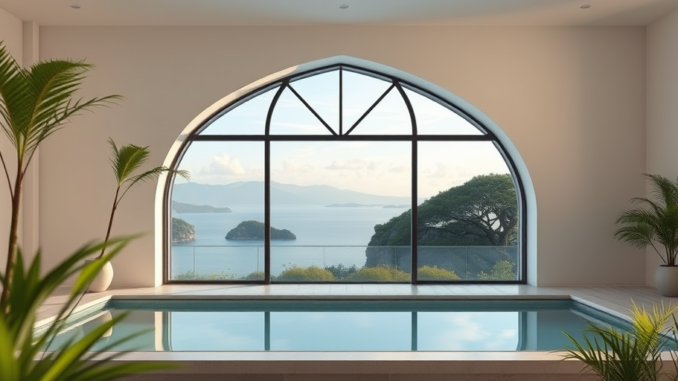
Summary
This article provides a detailed guide to choosing the right home improvement materials, covering aspects like project needs, material properties, budget, and sustainability. It emphasizes the importance of balancing cost, quality, and longevity for a successful renovation that enhances your home’s value. By following these tips, you can transform your house into a dream home that reflects your style and stands the test of time.
Explore elevating your homes value with the fine craftsmen at Elegancia.homes
Main Story
So, you’re thinking of sprucing up your place? That’s fantastic! Home improvement is exciting, but honestly, picking the right materials can feel like a bit of a minefield. Don’t worry, this guide is here to help you navigate the process and make sure your renovation is a total success.
First things first, let’s nail down your goals.
-
What’s the Point? Is this about boosting your home’s value if you ever decide to sell, or are you more focused on making it super energy-efficient? Or perhaps, you’re just trying to make it look more like your dream space. Figuring this out first will really guide your decisions. For instance, if you’re thinking resale, you’ll want things that are durable and pretty universally liked; think classic hardwood floors instead of that trendy, brightly colored linoleum you’ve been eyeing. If you’re all about reducing your carbon footprint, you’ll be looking at things like insulation, energy-efficient windows and doors. And, of course, if its all about the aesthetics, it’s time to let your creative flag fly, with textures and colors that match your vision for the perfect home.
-
Consider Your Home’s Unique Needs. Where do you live? Is it a desert climate or do you get a lot of rain and snow? Choose materials that can stand up to whatever Mother Nature throws at them; if you live in a humid area, moisture resistance is king. Also think about the function of each space: high traffic areas, like kitchens and bathrooms, need tough, easy-to-clean surfaces. Living rooms and bedrooms, while still needing durable materials, give you more freedom to get creative. I once did a renovation in my old apartment, it was a top floor flat, and I didn’t think about how hot it was going to get in the summer – let me tell you, that’s a mistake I won’t repeat.
-
Get to Know Your Materials. Seriously, research the heck out of this. You need to know the nitty-gritty about how durable something is, how much maintenance it’ll need and whether it can cope with moisture or fire. For example, hardwood floors are gorgeous and last forever, but they need regular love and attention. Ceramic tiles are amazing for kitchens and bathrooms, because they are water resistant and super low-maintenance; on the other hand vinyl siding is great cause it’s basically zero maintenance, but it’s not as hard-wearing as, say, fiber cement. Knowing this stuff is key to making good choices.
-
Budget Wisely. Now, I know it’s tempting to go for the cheapest option, but trust me, it rarely pays off in the long run. A cheaper material might mean more repairs and replacement later, and that’s not cheap. Do your homework, shop around and compare different brands. Consider the long term too. It’s not just about what it’ll cost initially, but what it’ll cost you over time to maintain.
-
Longevity is Key. Choose materials with a good track record for longevity. While some might cost you more upfront, they could save you a ton of money in the long run, plus you won’t have the hassle of frequent replacements. Also think about how much maintenance something will need, are you happy to spend a few hours each year staining a wooden deck or would you rather go for a material that requires less upkeep? Make choices that fit your life, not the other way round.
-
Go Green If You Can. Think about the environmental impact of your choices. Are there more eco-friendly options made from recycled stuff or renewable sources? Sustainable materials aren’t just good for the environment; they can even boost your indoor air quality – something most people don’t think about until its too late. It’s not just about the materials themselves, think about the whole picture, from production to transport and recyclability.
-
Don’t be Afraid to Ask for Help. It might be a smart move to talk to an architect or a builder, you know, someone who has done this before. They can guide you, explain all the local building codes, and help you avoid some pretty costly mistakes. So don’t be shy, go ahead and ask away, a second opinion is always welcome.
-
Think About Future You. Choosing materials that can be adapted or changed in the future is smart, it reduces waste and means if you need to do something in a few years, it won’t be a massive pain.
By following these steps, you’re well on your way to transforming your home improvement vision into a total success. Remember, make decisions that meet your needs, research all your options, and make those choices that enhance your home for years to come. It’s about making a home that is functional, comfortable and beautiful.


Be the first to comment